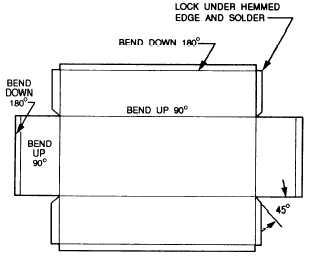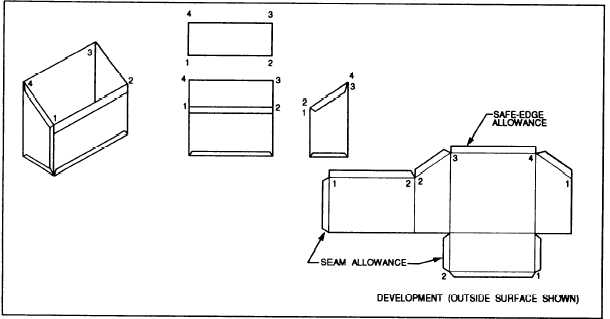A spherical shape would be an example of an
approximate development. The material would be
stretched to compensate for small inaccuracies. For
example, the coverings for a football or basketball are
made in segments. Each segment is cut to an
approximate developed shape, and the segments are
then stretched and sewed together to give the desired
shape.
The following pages cover developable and
nondevelopable, or approximate, methods. For
examples, straight-line and radial-line development are
developable forms. However, triangular development
requires approximation.
STRAIGHT-LINE DEVELOPMENT
This term refers to the development of an object
that has surfaces on a flat plane of projection. The
true size of each side of the object is known and the
sides can be laid out in successive order. Figure
8-6 shows the development of a simple rectangular
box with a bottom and four sides. There is an
allowance for lap seams at the corners and for a
folded edge. The fold lines are shown as thin
unbroken lines. Note that all lines for each surface
are straight.
Figure 8-7 shows a development drawing with a
complete set of folding instructions. Figure 8-8 shows
a letter box development drawing where the back is
higher than the front surface.
RADIAL-LINE DEVELOPMENT
In radial-line development, the slanting lines of
pyramids and cones do not always appear in their true
lengths in an orthographic view. The draftsman must
find other means, as we will discuss in the following
paragraphs on the development of right, oblique, and
Figure 8-7.—Development drawing with folding instructions.
truncated pyramids.
Figure 8-8.—Development drawing of a letter box.
8-5




